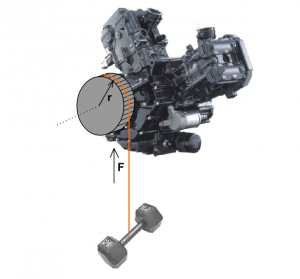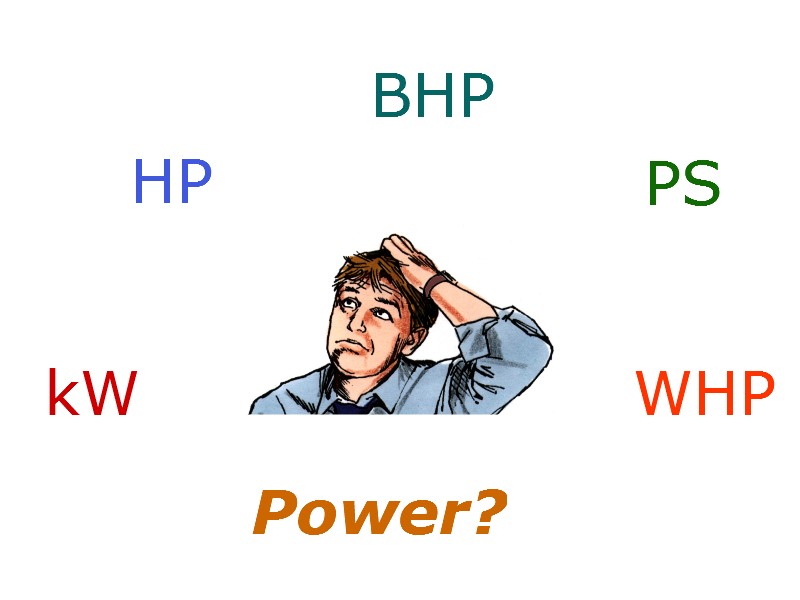While reading auto magazines or watching auto shows you may have came across the power figure of an engine, where you see the engine develop X amounts of either kW, HP, BHP, PS or even WHP, and at one point in time, you’ve asked this question to yourself : What’s with the various power ratings? or How are these power rating different from each other ? and other similar questions. Amirite?
That’s why I’ve decided to answer these questions, and explain in simple terms just what is the difference between all these ratings, and which power rating gives you a better understanding of engine power. So lets begin.
Back in the old days when horses were pretty popular, there a marvelous piece of engineering that was replacing “real” horses very rapidly, ‘ The Steam Engines‘. At this time, people started to make comparison between horses and engines and that very moment was the creator of the question of the century(Ah.. don’t take it personally), “Which one is better, a horse or a steam engine?”. You may think, ‘oh..simple, its Steam Engine’ but back then it was yet to be proved. So what could be the solution? You’ll know in a minute.
The pioneer, James Watt,(who’s also inventor of steam engine) came forward with a revolutionary idea of labeling power of an engine in term of horses, so that everyone could understood which is better ‘an animal or the machine’. Watt observed that a horse could turn a mill wheel 144 times in an hour (or 2.4 times a minute). The wheel was 12 feet in radius; therefore, the horse travelled 2.4 × 2π × 12 feet in one minute. Watt judged that the horse could pull with a force of 180 pounds. So by simple physics:
![]()
However, he noticed that different horses produced different power as the power varied from horses to horses due to difference in age,size and breed. After a long observation he finally settled at the 33,000 ft·lbf/min figure which if we convert into SI unit gives 745.699 W. So
Now power of the engine is simply given as:
Also, if you know the formula which looks exactly like this:-
you can easily figure out the problem in measuring the power, practically. Give it a go.
 Got it? Let me explain. Since torque is radius times force and since here that force is load/weight which is tied at the end of crankshaft by a rope (well.. not really, just imagine so for the sake of explanation). As power is dependent on torque, which is in turn dependent on weight, which is still hanging on a rope, and since engine works at very high rpm, it wouldn’t be a good idea to hang a weight at the end of speedy crankshaft.
Got it? Let me explain. Since torque is radius times force and since here that force is load/weight which is tied at the end of crankshaft by a rope (well.. not really, just imagine so for the sake of explanation). As power is dependent on torque, which is in turn dependent on weight, which is still hanging on a rope, and since engine works at very high rpm, it wouldn’t be a good idea to hang a weight at the end of speedy crankshaft.
Now it was time for the engineers to find a solution for measuring the power more practically. Here they came up with a very ingenious solution. What they did was simply replace the load with some kind of ‘resistance’ (no…not the electrical one). A ‘resistance‘ here is something that opposes the motion of speedy crank, also what could work than a brake for this job.
So the amount of heat generated by applying the brakes which are bolted on drive shaft, per unit time, gives the power rating of that engine. And the unit of power obtained by this method is known as BHP or Brake Horse Power.
The difference between HP and BHP didn’t even exist until recently. In order to get bigger numbers, engine manufacturers (including car makers), placed a single unit on a testing rig, and connected the drive shaft to the brake. It measured the pure horse power coming from the engine, without any auxiliary units. But seeing as how that wasn’t accurate with what customers were experiencing, a new SAE certification process appeared. The engine was now measured with all of its auxiliary systems, like transmission, fuel pumps, etc, while an independent observer was present. As you can imagine, a reduction in power ratings was experienced, as many systems take a toll on the eventual output of the engine. BHP is still used regularly in Great Britain (where it is mistakenly explained as British Horse Power, sometimes).
I hope you’re with me so far. If Not, please use our comment box and feel free to share your opinions with us. Let’s move on!
Now lets talk about another power unit PS. PS is often overlooked, especially in the English media. It is the abbreviation of a German term, Pferdestärke, which basically means horse power. But it isn’t exactly the same as the ol’ English HP. 1 PS = 735.5 watts (or 0.735 kW). In order to accurately figure out the difference,
Car maker often prefer to use this measurement as it is bigger in terms of figures. Let’s say a car generates 100HP then that same car generates approx 102PS and you know, Bigger is Better.
Last but not least, WHP comes from ‘wheel horse power’, but you can also find it written as RWHP (rear-wheel horse power). Its the amount of power wheels actually send to the road. You get WHP figure by running the car on a rolling road (aka dyno). Of course the tyres make a difference, and the type of dyno, but the rating is usually pretty close to the SAE-verified HP rating.
So now, the next time a car maker flaunts various ratings in your face, you’ll know just how powerful the engine really is 🙂
